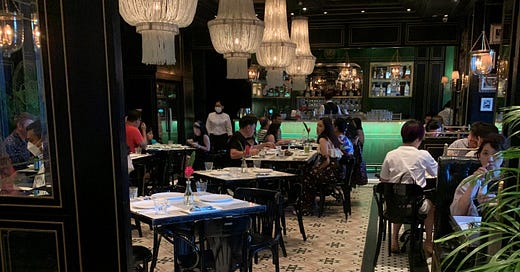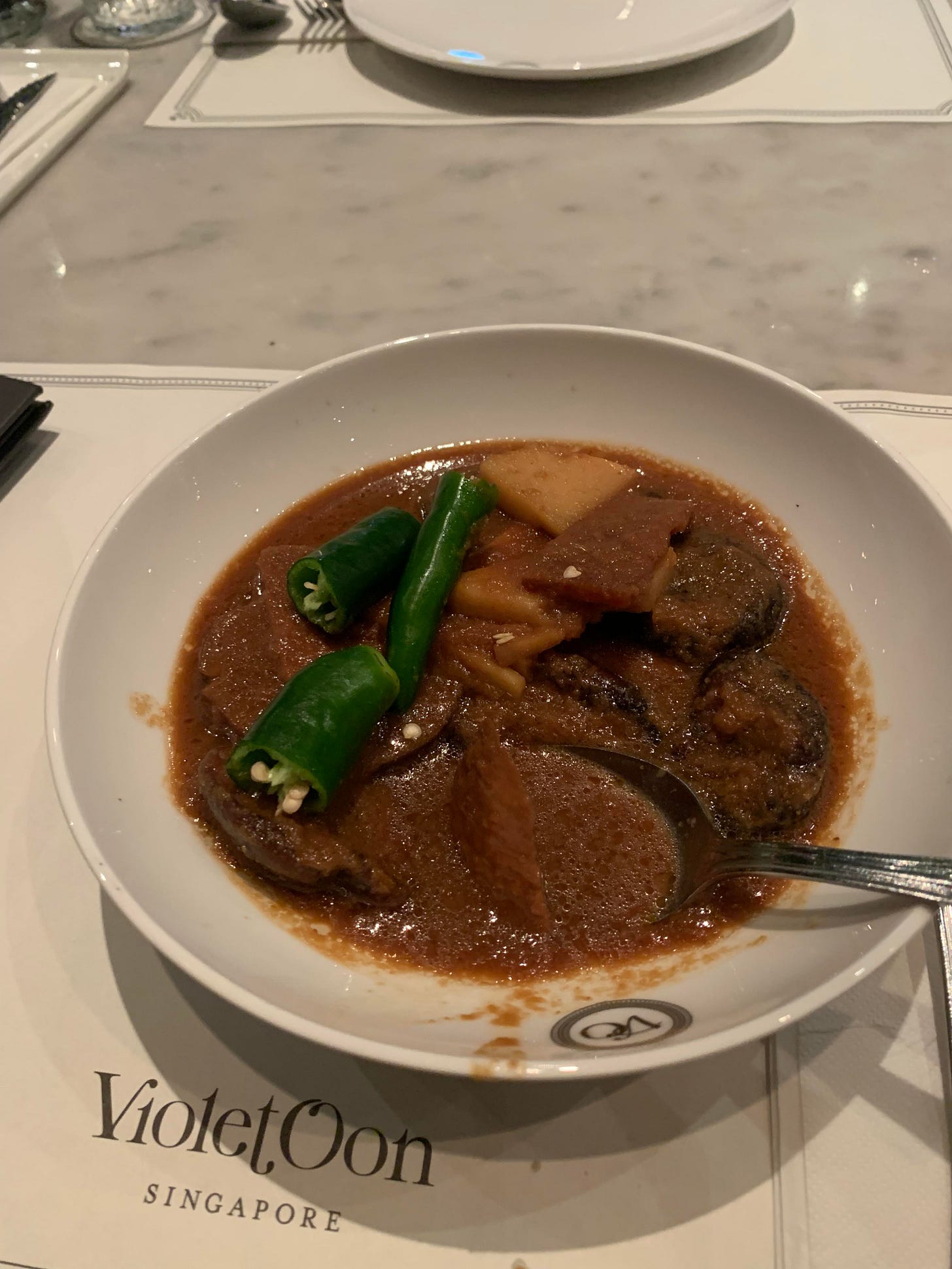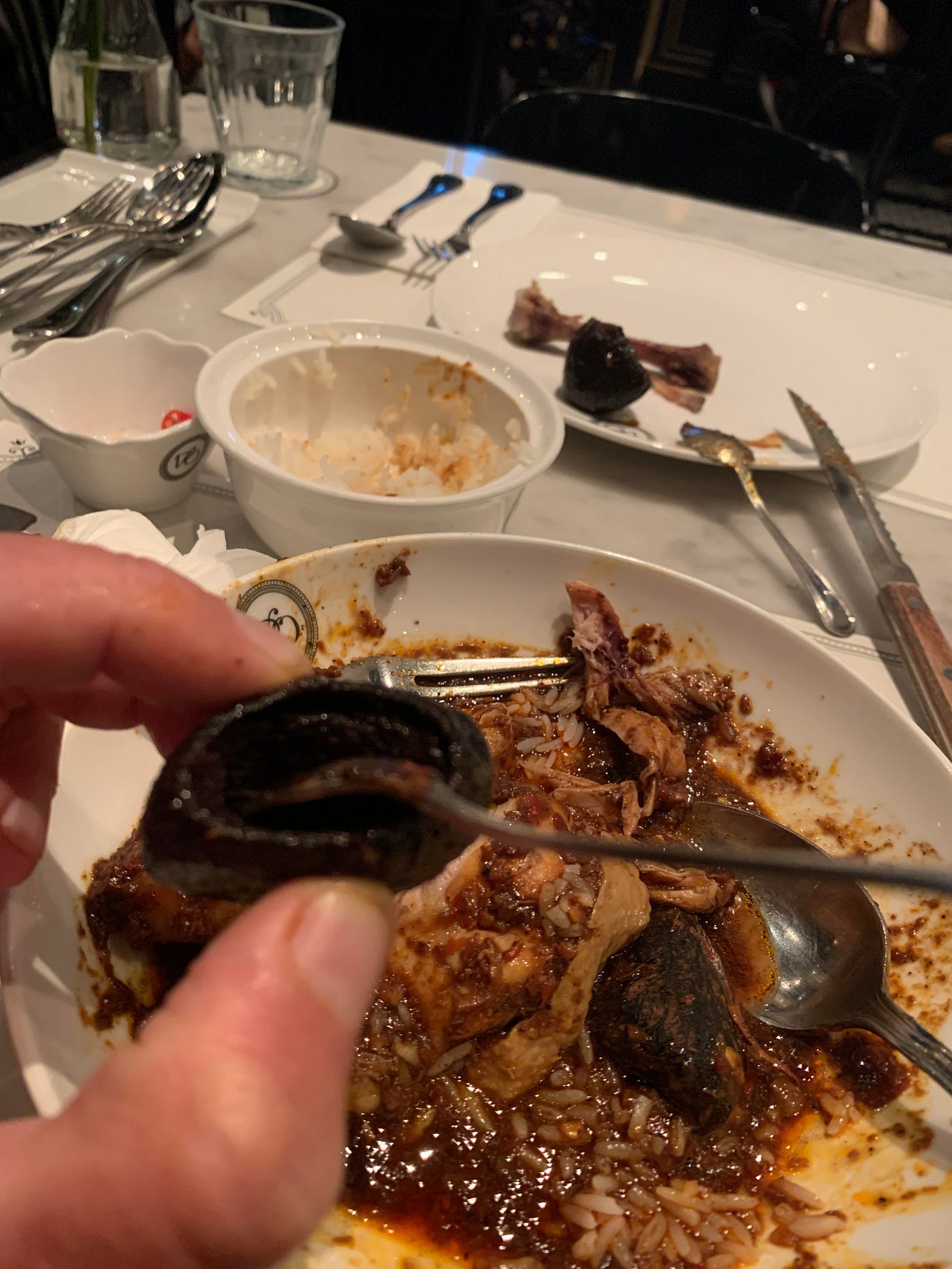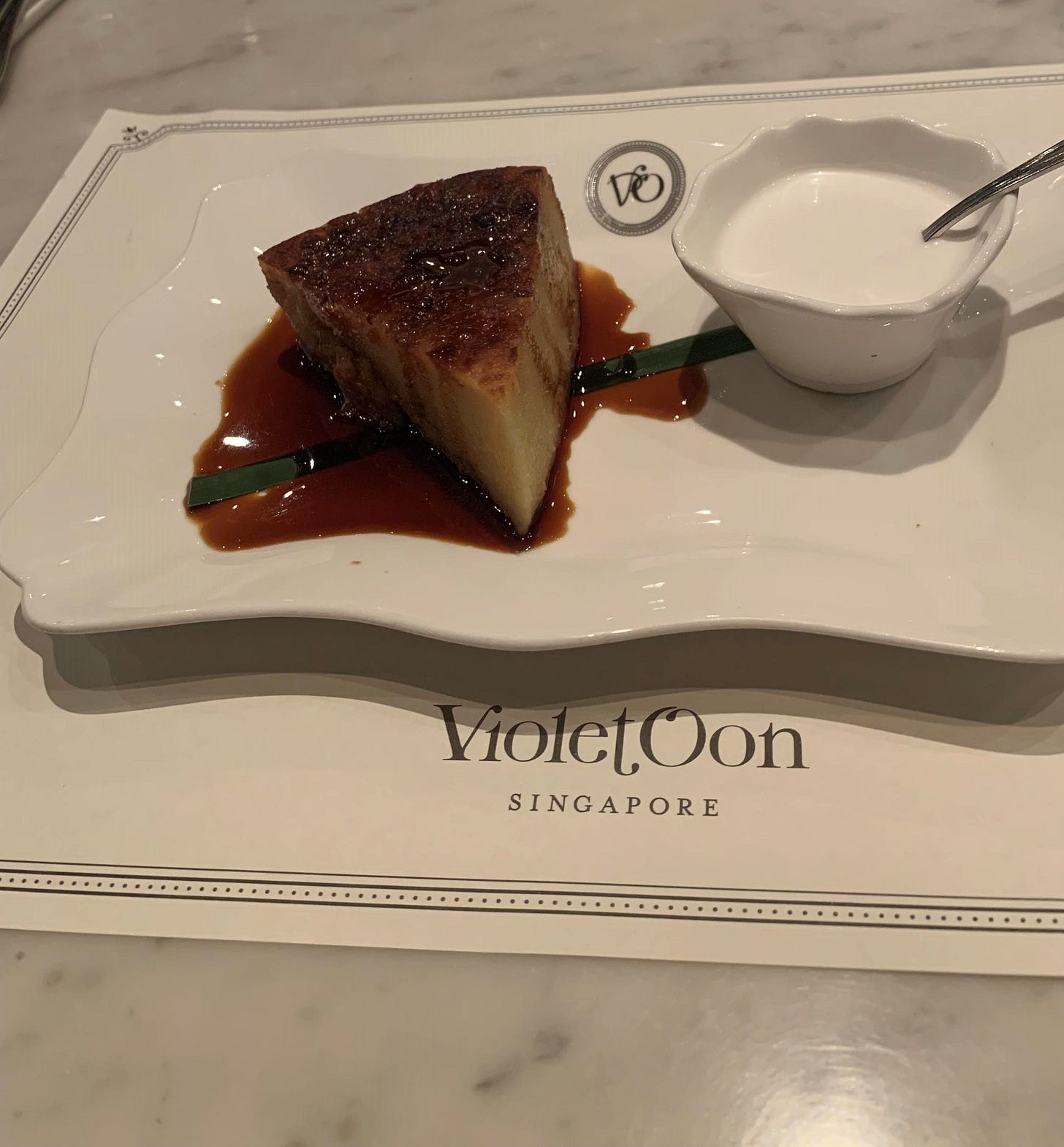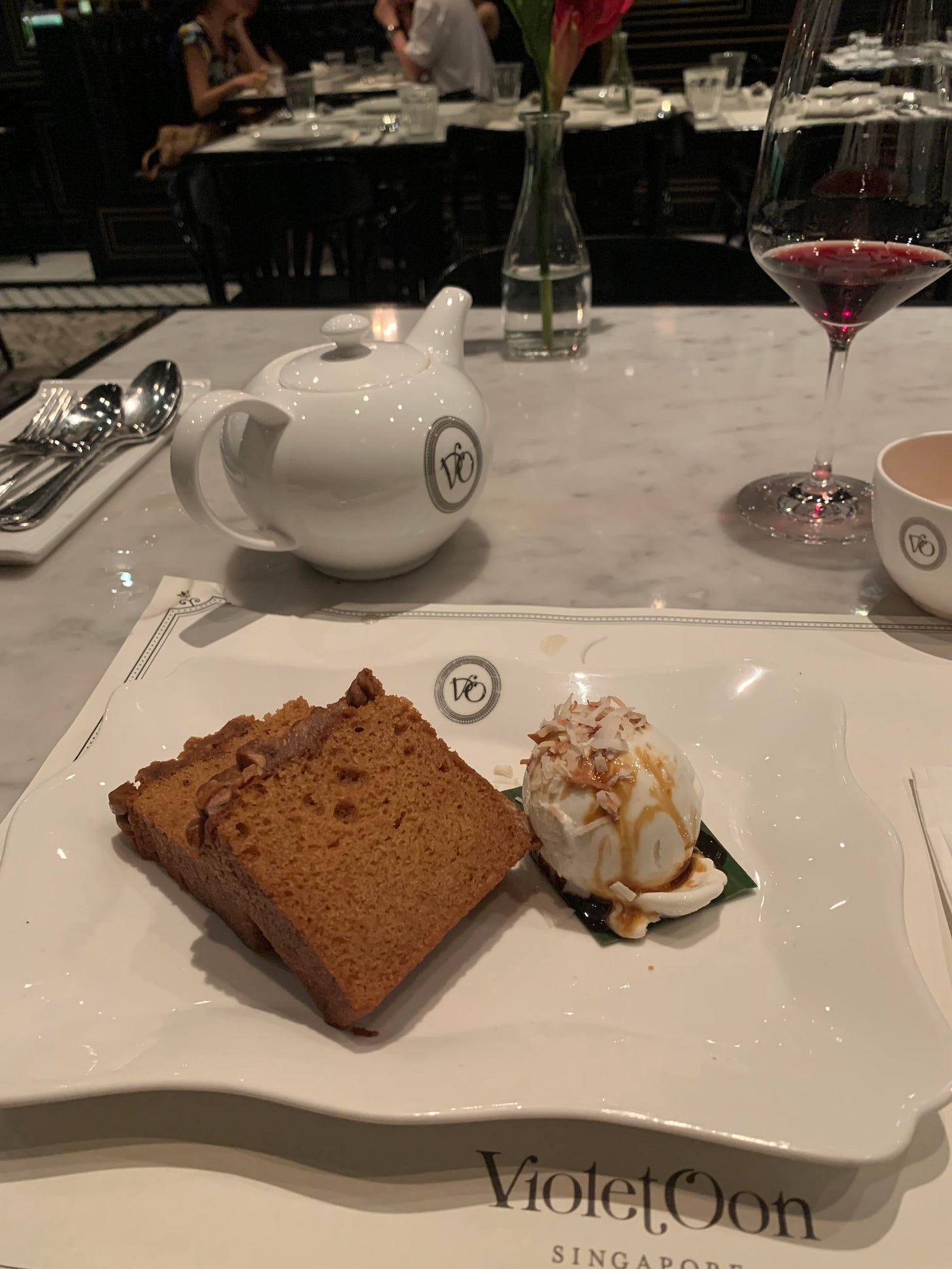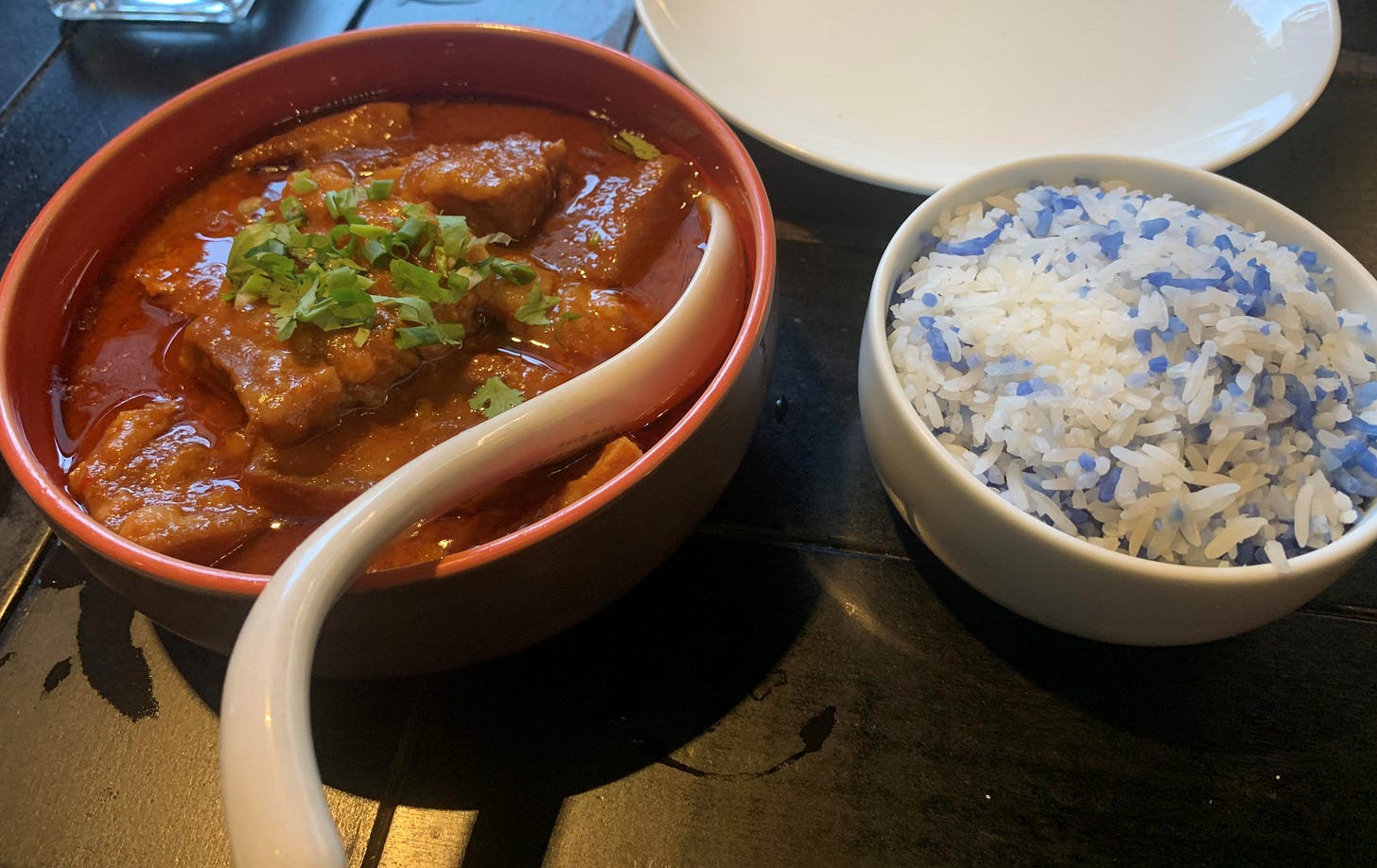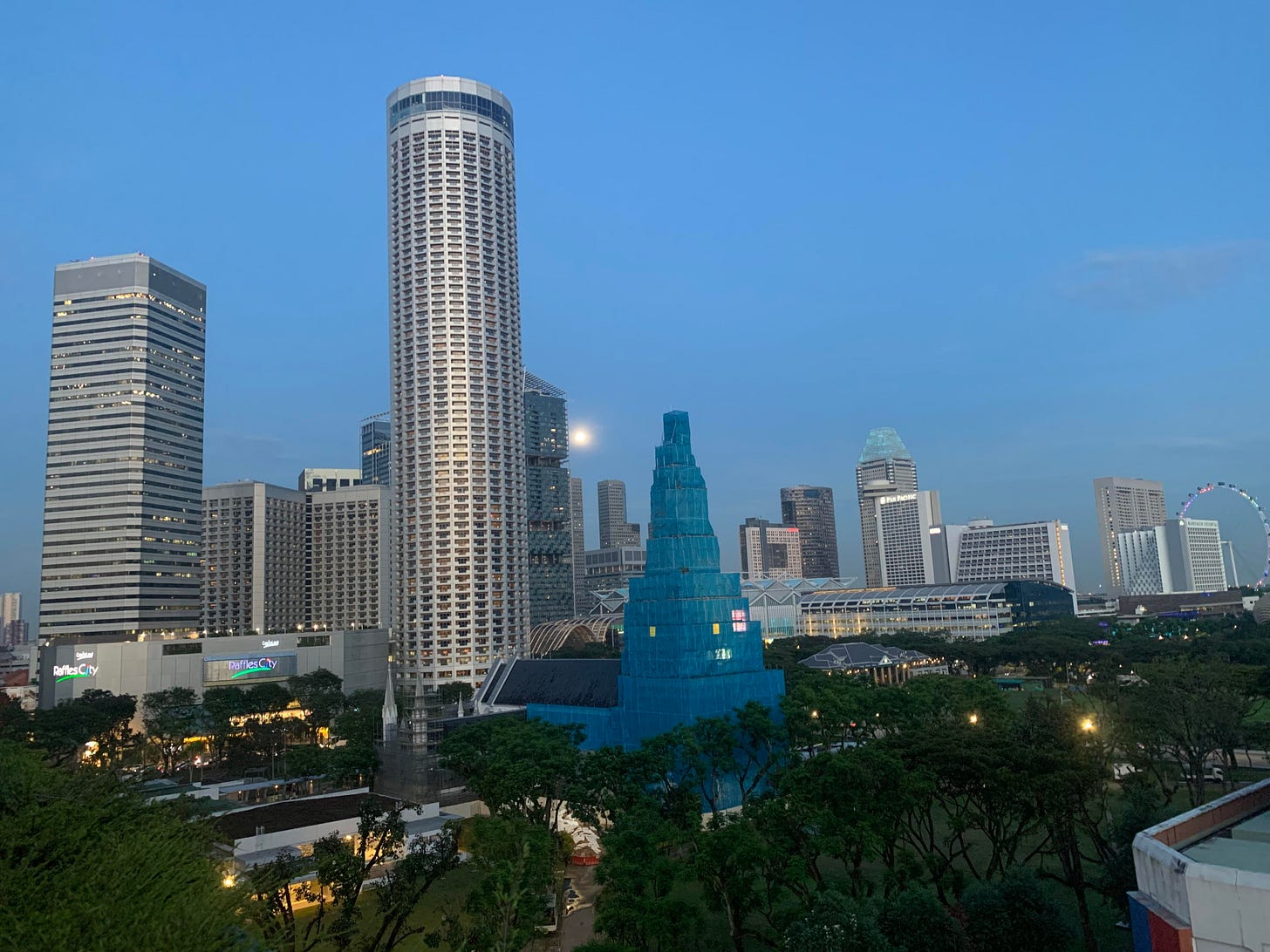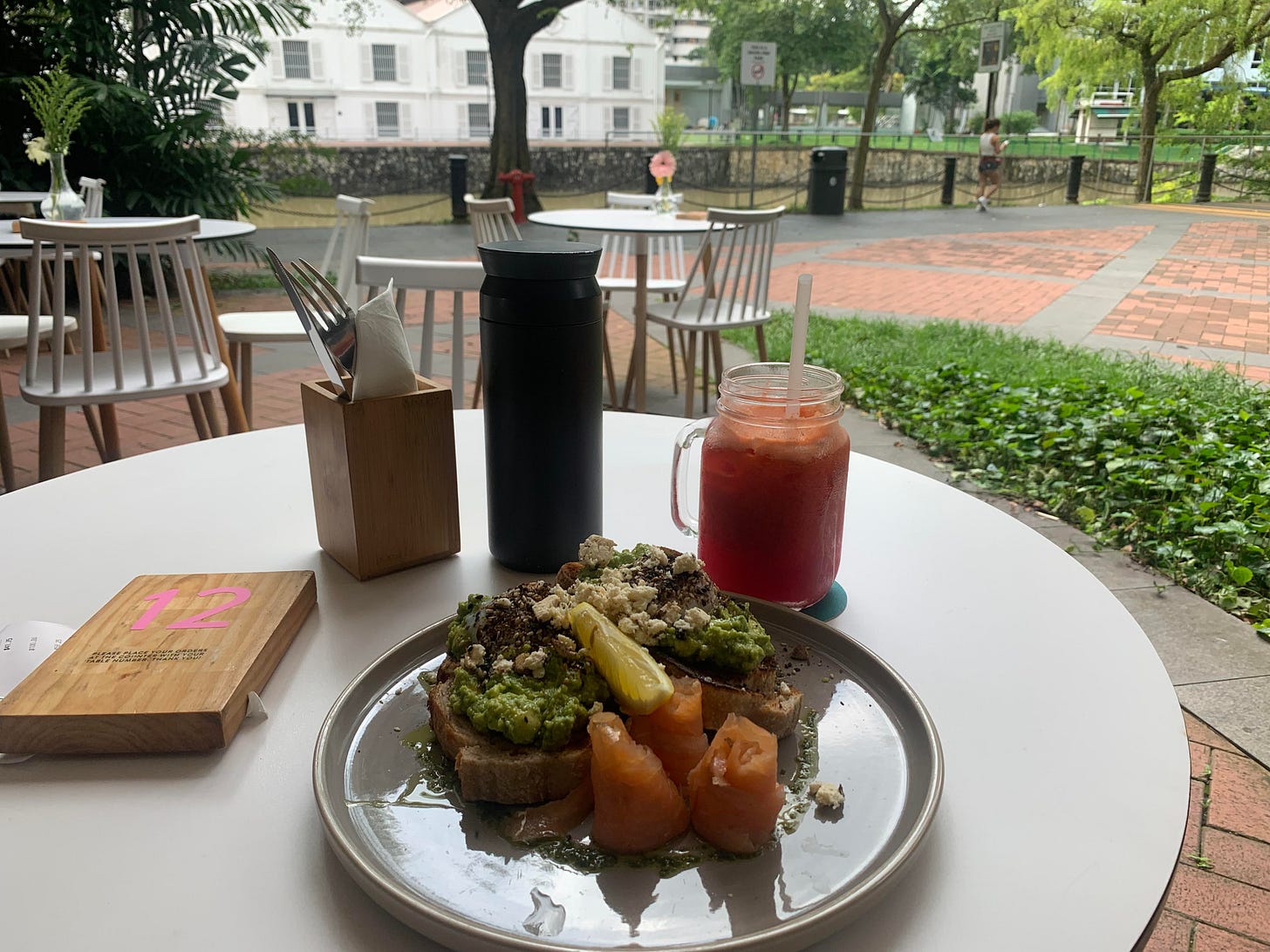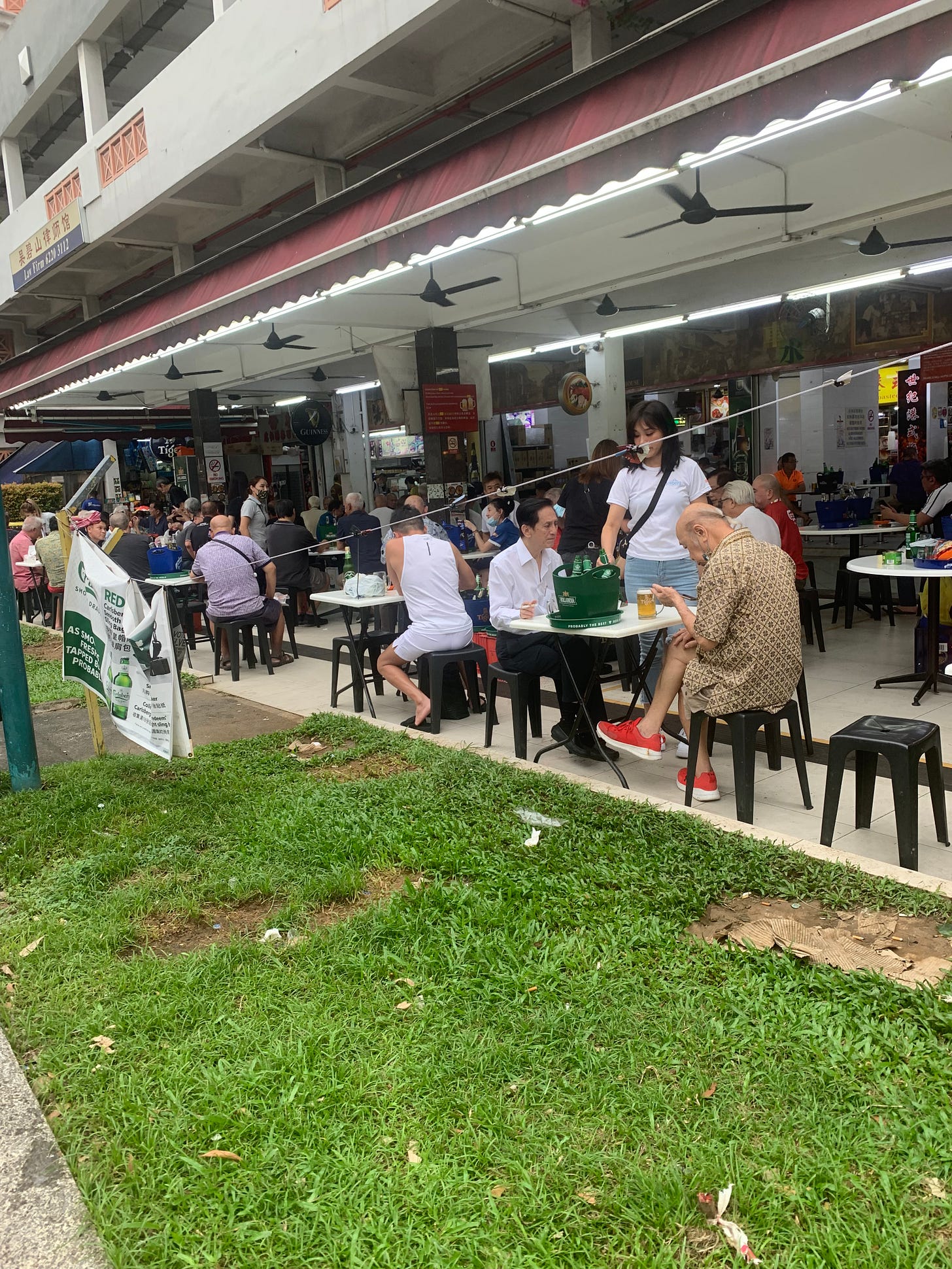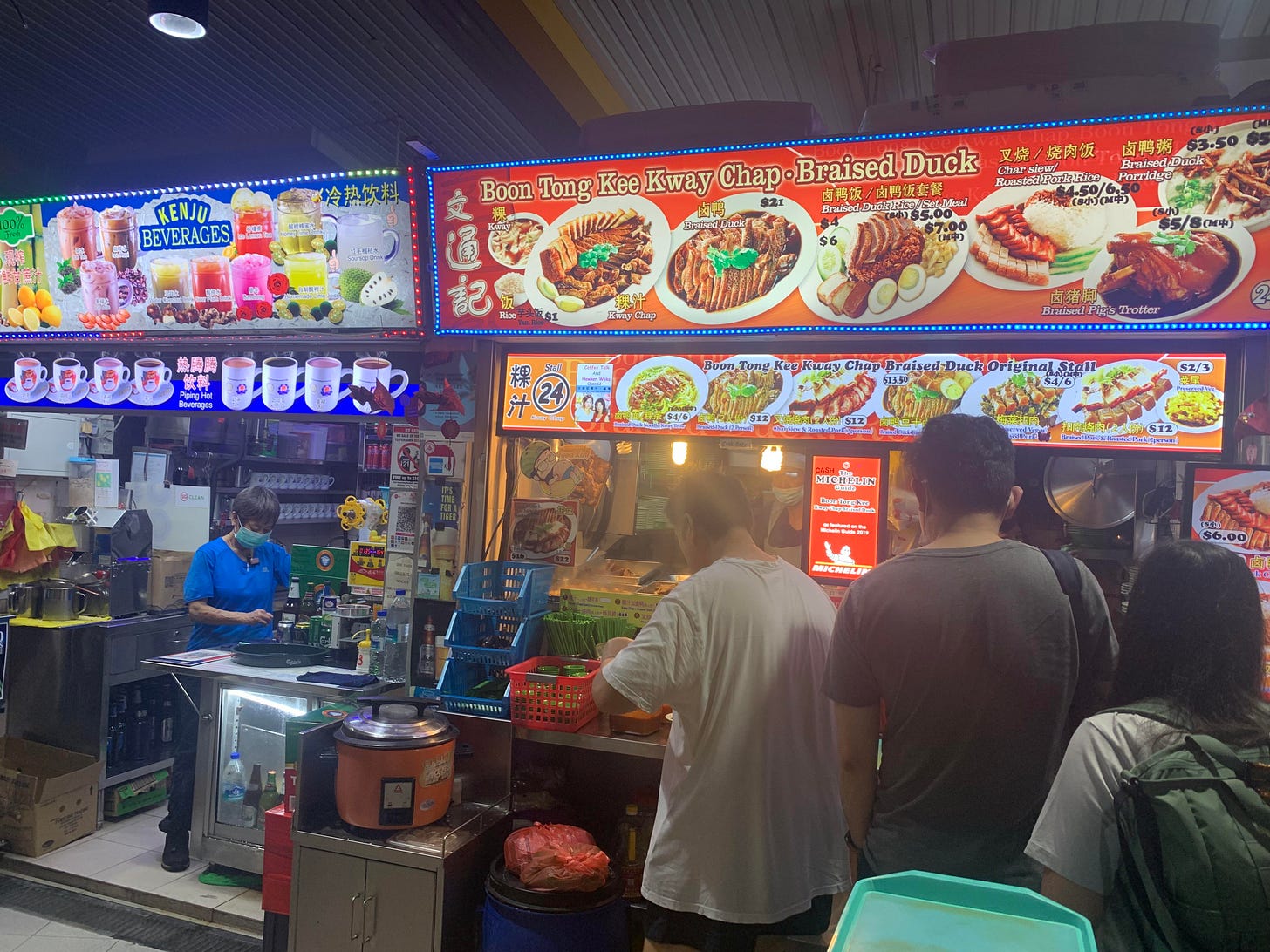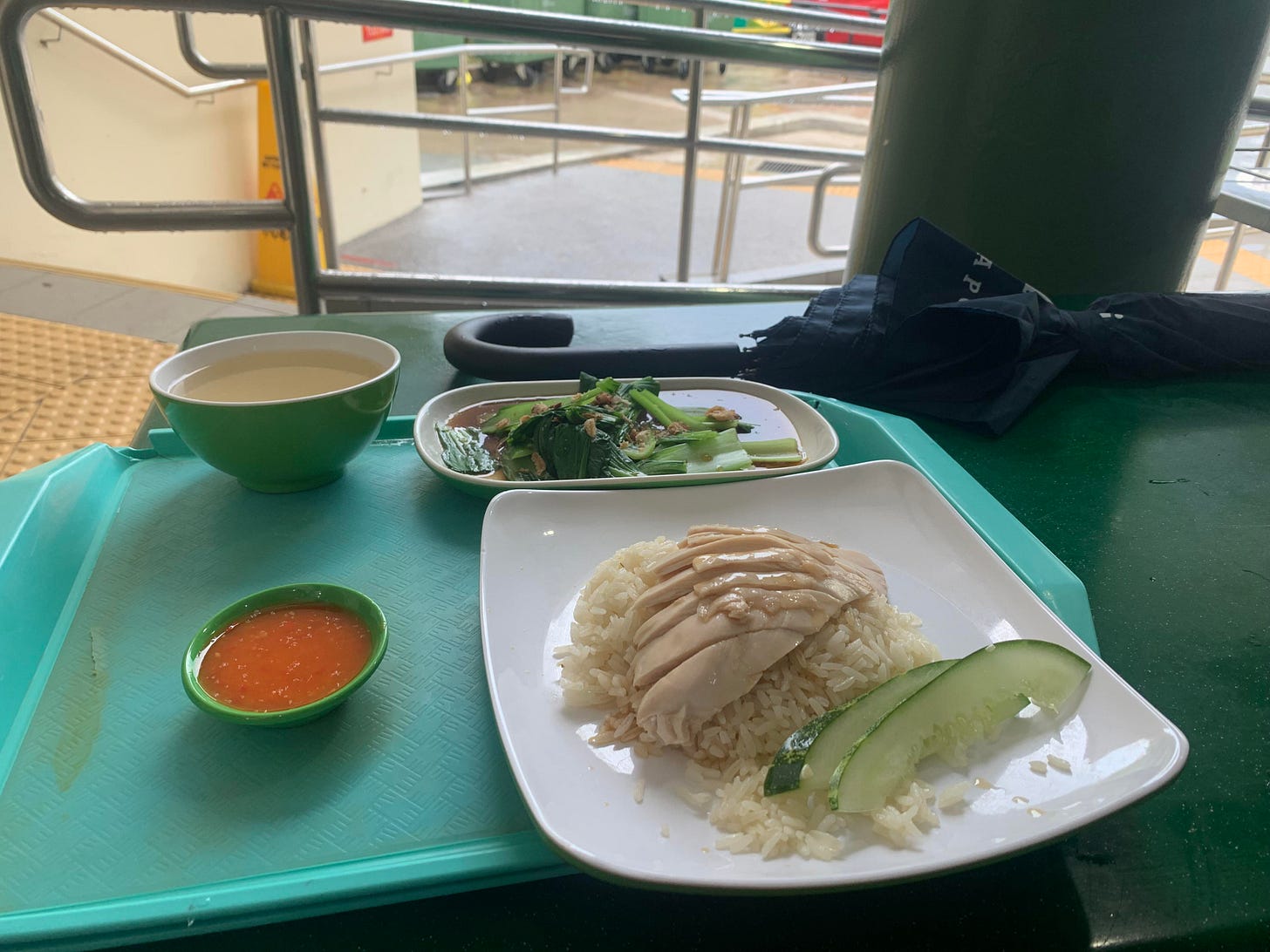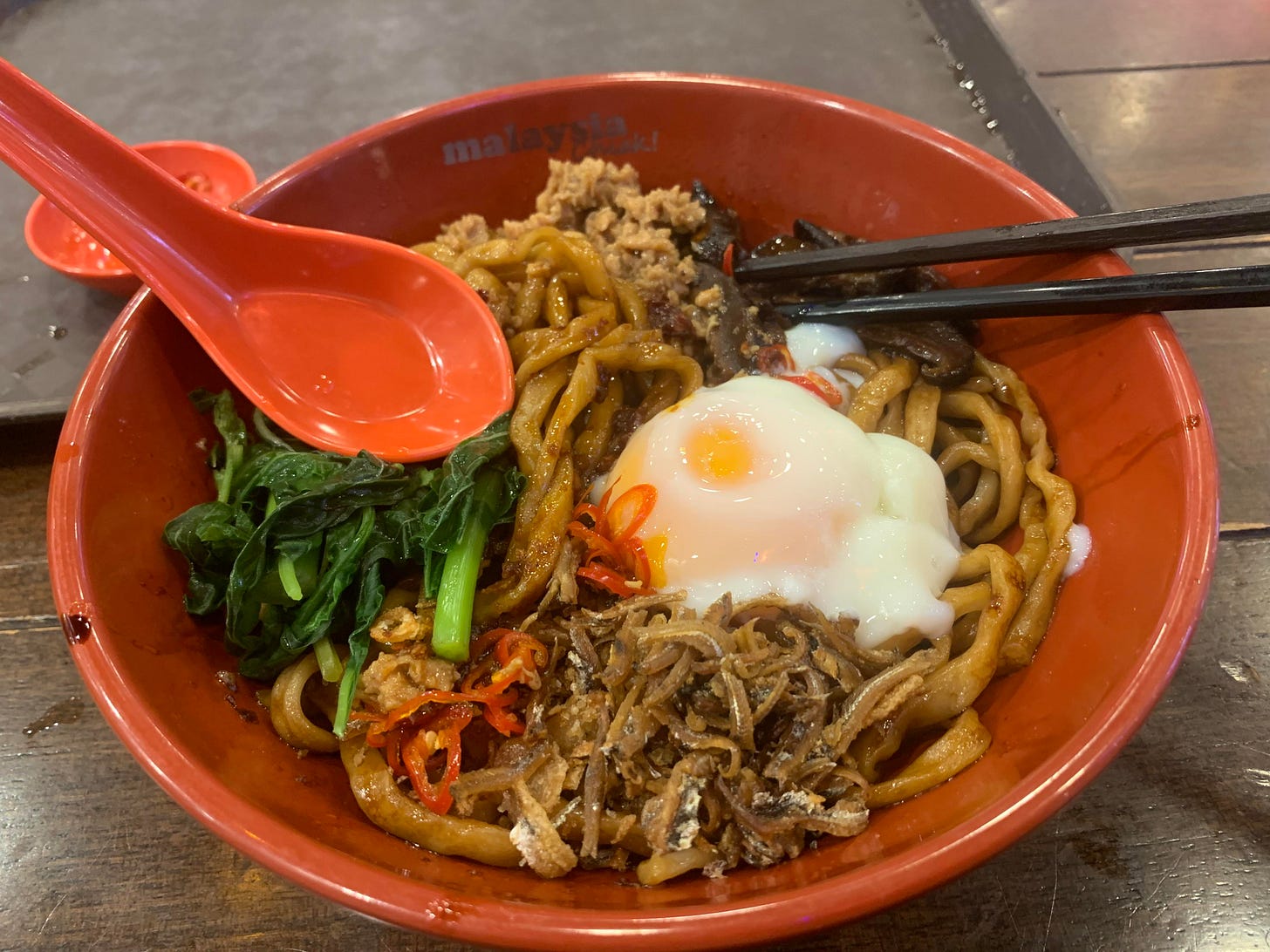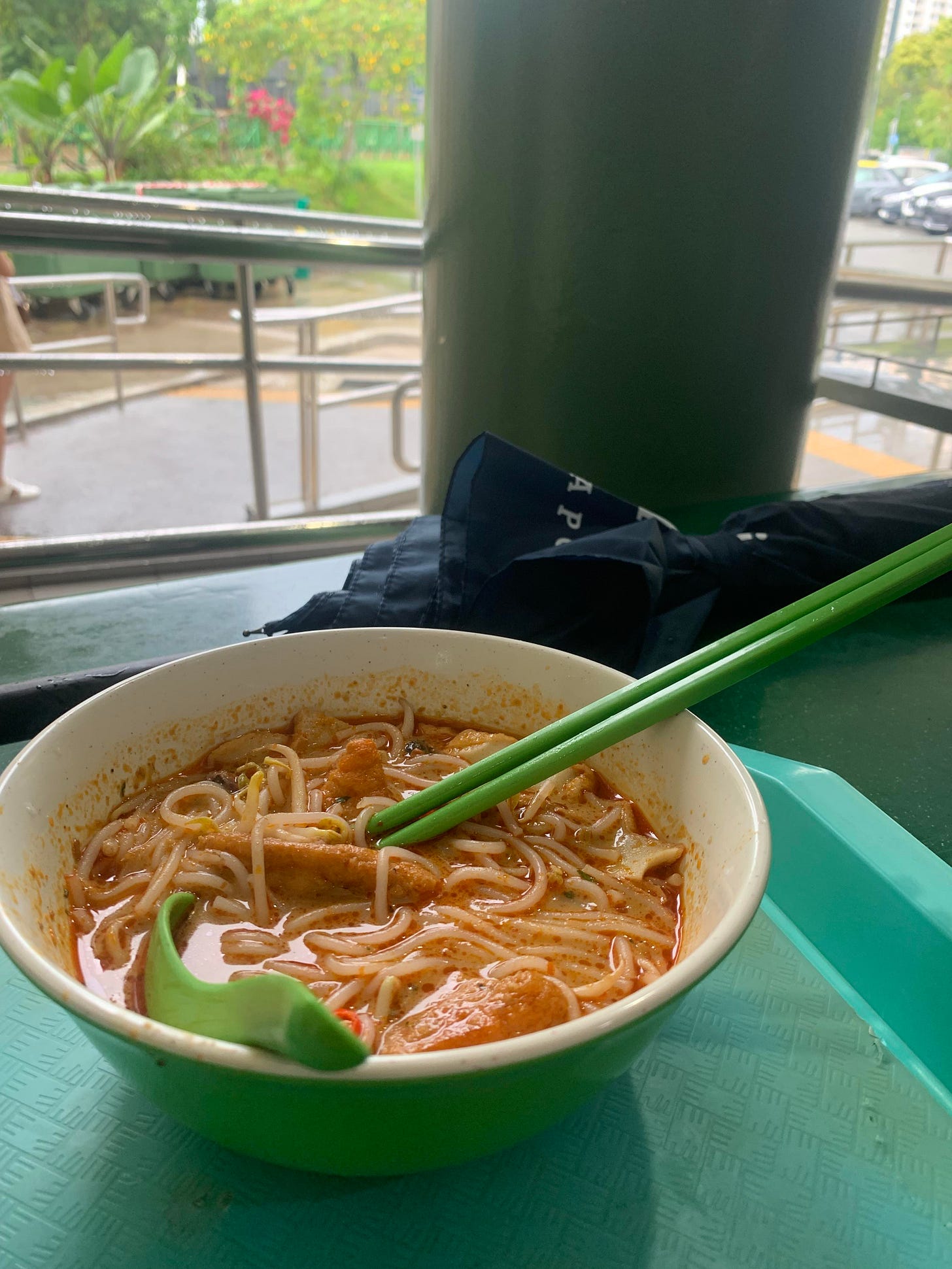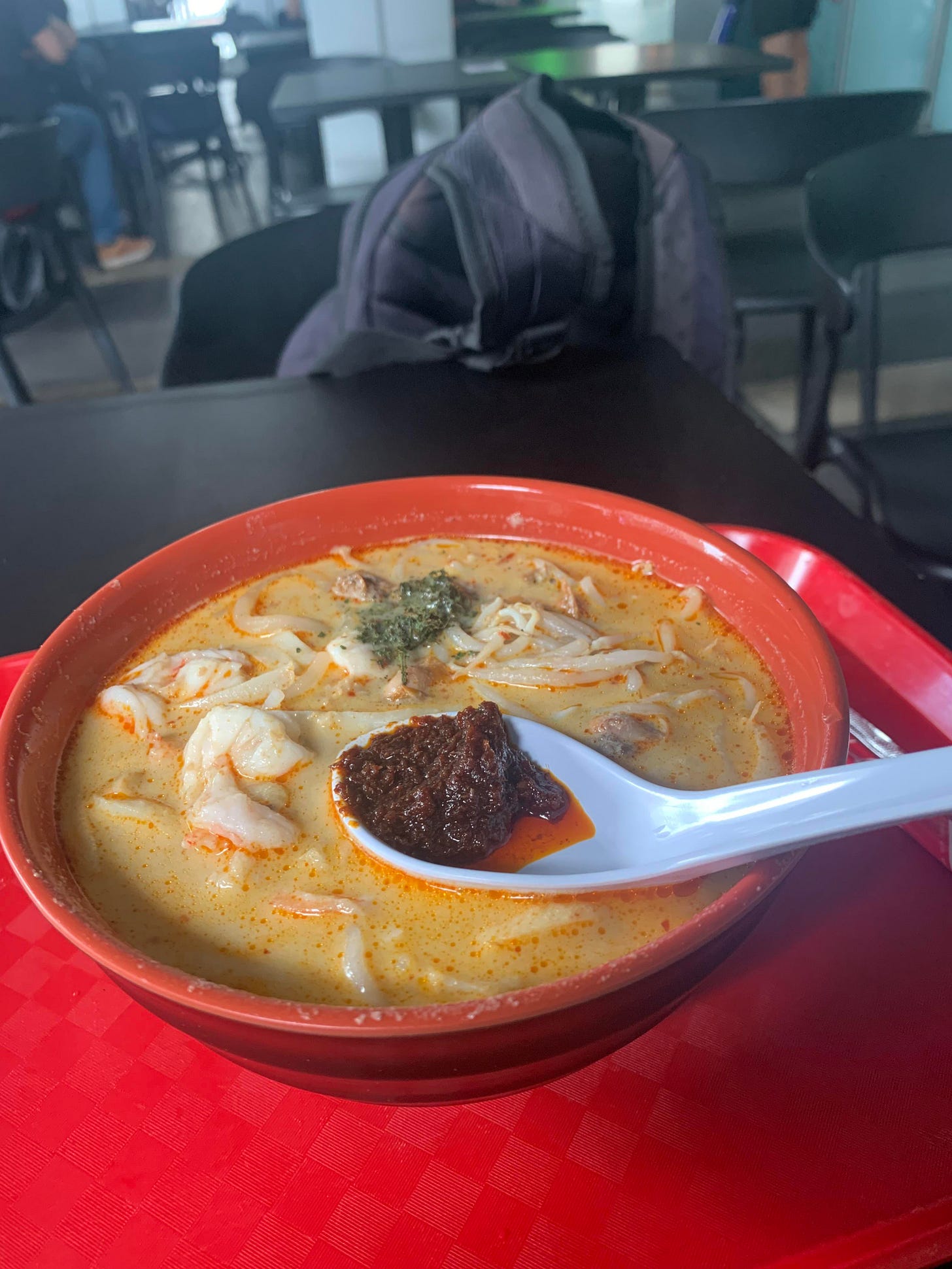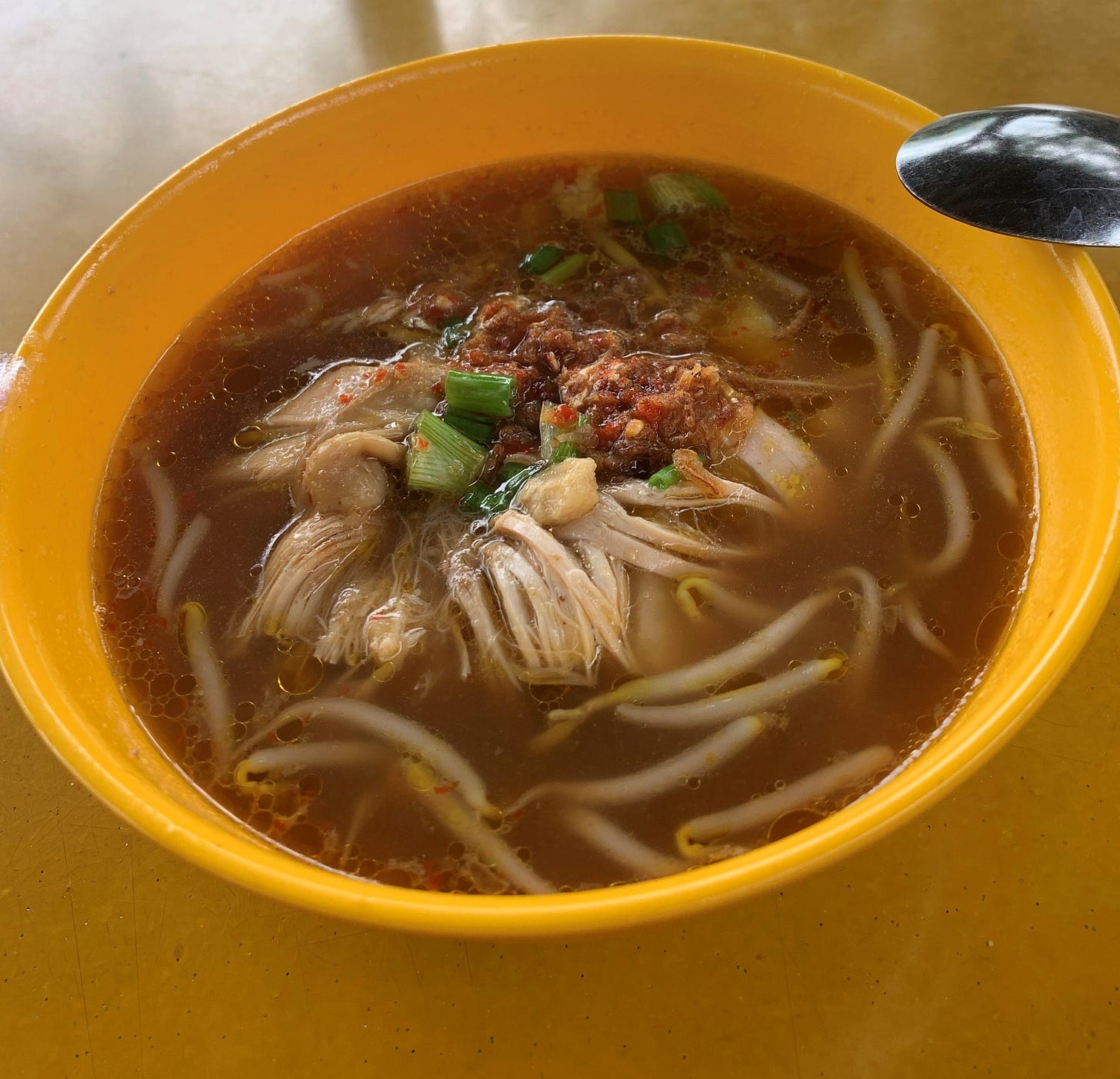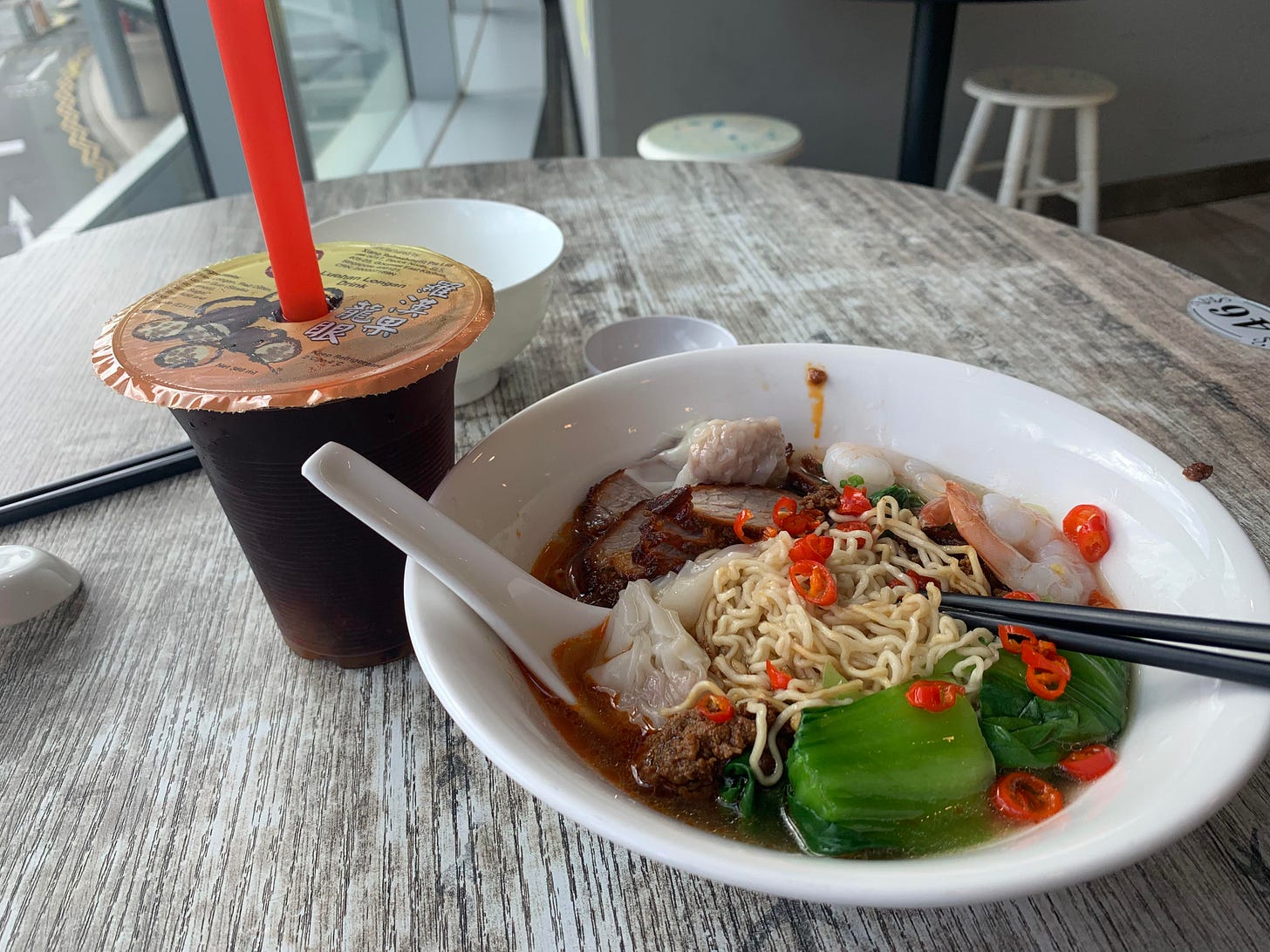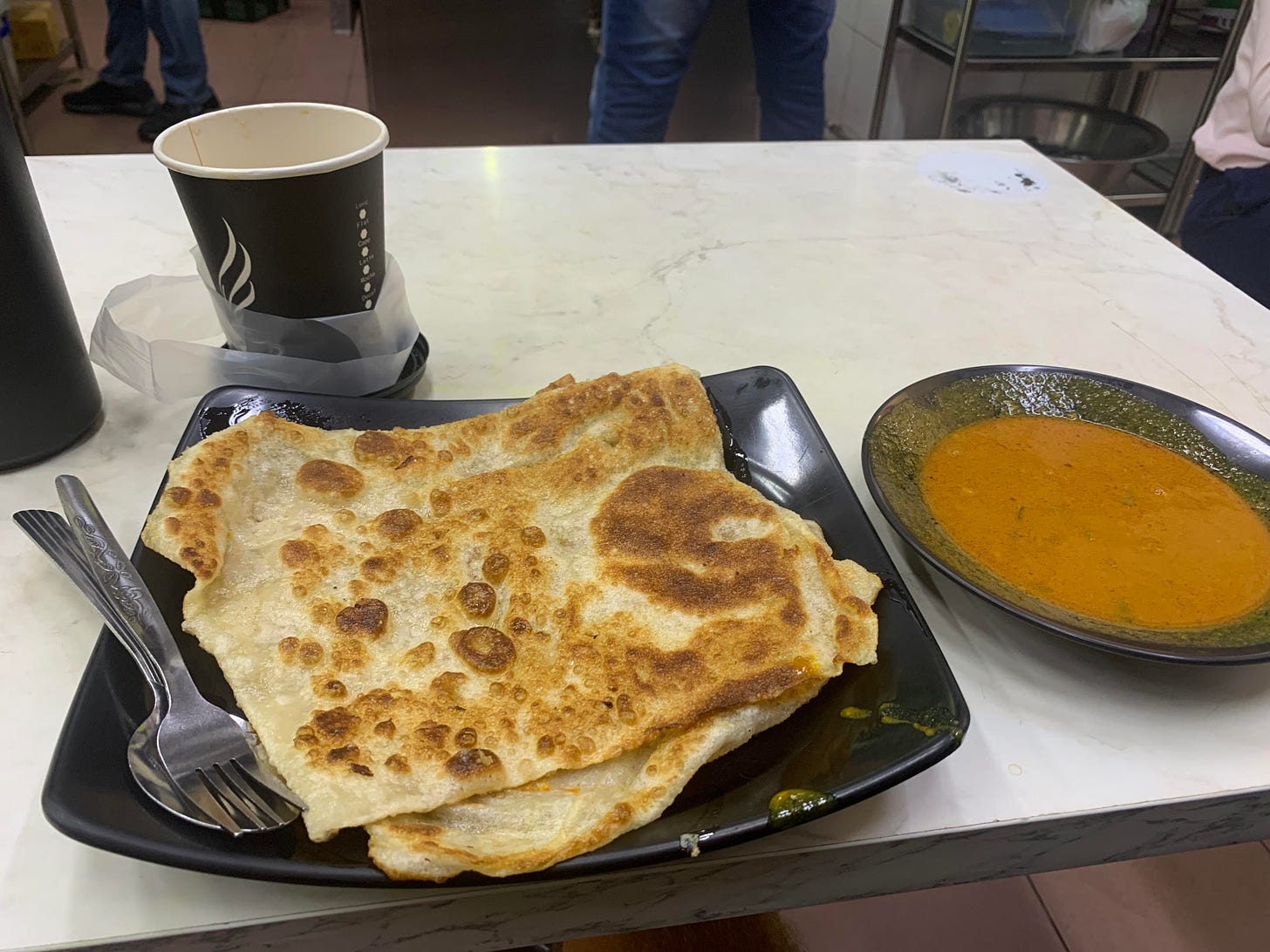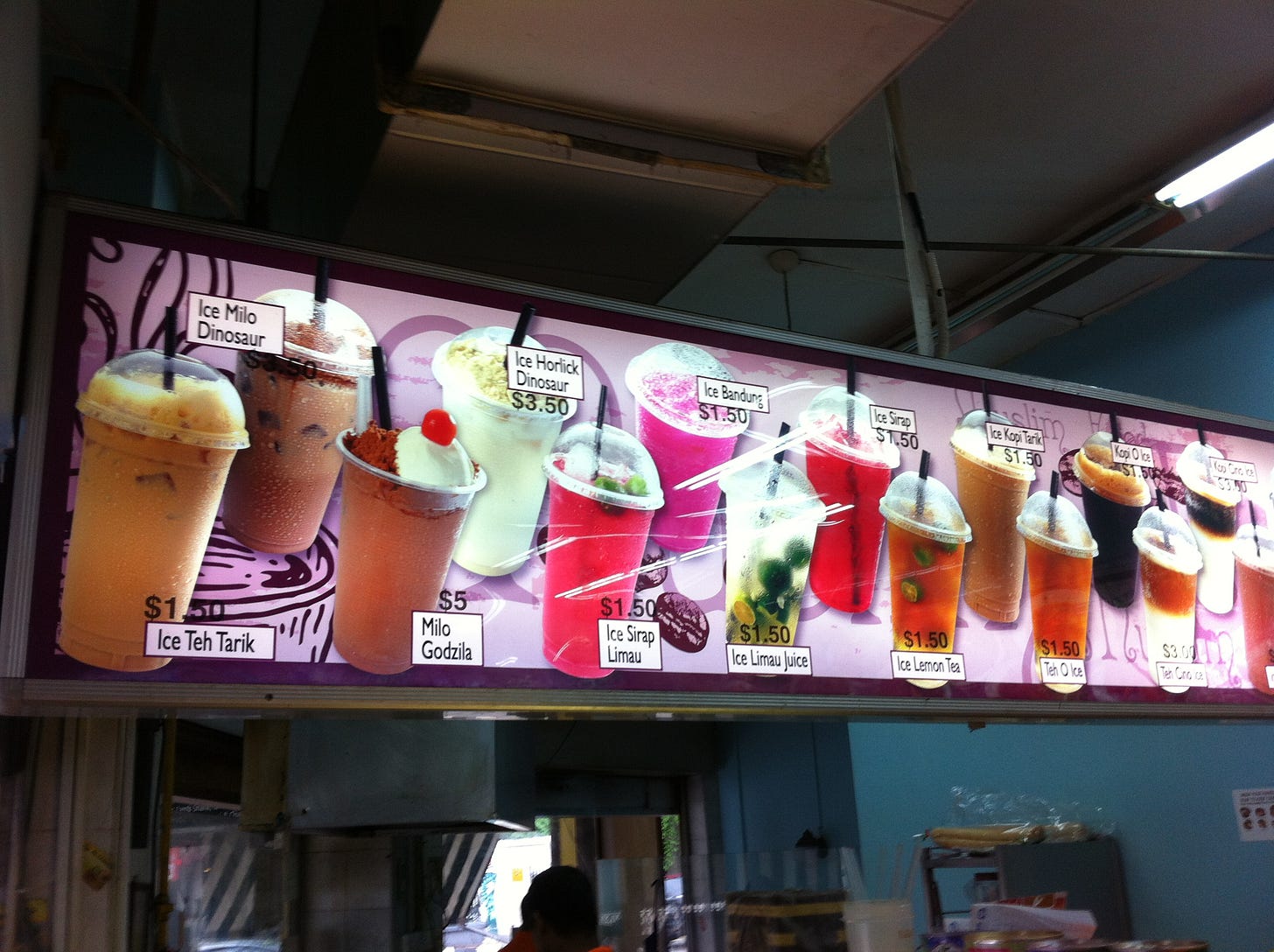Singapore diaries. 2022-23. Part 4. FOOD!
"There is no sincerer love than the love of food", - G.B. Shaw
Food has always been one essential part of my travels. I was thinking of the reasons today whilst walking along Mabori Coast near Yokosuka.
May be because I grew up in the Soviet Union where food rationing was not rare. Access to caviar and salami was a sign of success ( those times few would sign under the statement that those foods are unhealthy), lining up for hours to buy oranges or bananas was a national sport. I still remember childishly attaching “Made in Morocco” stickers to the furniture at home after my tired mum would return from those queues with a bag full of oranges. I remember quantity you could buy was also limited, as when I grew a bit older I did my queue duties as well. In that world being “friends” with a sales assistant of a meat section in the local food store would be more beneficial than promotion at work.
Or may be I valued food in my travels because I liked the exotic names and colorful images of food, primarily from Asia. From 2005, when I started to travel to Asia for work on a regular basis, I made folders for each country I visit or would like to visit. In these folders I would put carefully cut out articles from different travel publications focusing on mostly where to go and what to eat. The folders included some European countries and places like Norfolk Island, Tahiti, you got the idea. When I visited my house in Sydney this year I have realized that I still keep many of them. Would be fun to re-read some of them, now pieces of aged yellow paper.
Before going to any new country I would learn and write down names of staple foods in the local languages, sometimes carrying Lonely Planet guides with me where I underline names of food and places to see. On my repeat visits I would check places with reviews mostly in the local language thus avoiding “popular “ destinations and focusing on the authentic interesting or delicious spots. Memories…
I stop walking, sit on a bench to finish part 4 of my Singapore diaries. Smart phones, how could we live without …
Singapore is one happily simmering pot of different races: 76% are of Chinese origin, 15% - ethnic Malays, and 7.5% Indians. Although interracial marriages are thrown upon, they are more and more couples of mixed origin. Plus there are Peranakans which I mentioned in part one.
So, this multinational pot creates another one: the food variety is amazing! You can dine in style and glamour, but also can have equally tasty food in more rustic surroundings, which will cost you only a fraction of a posh restaurant meal.
I will start with my favorite Peranakan food in its high-end version.
There are many places to try this amazing food, but I recommend National Kitchen by Violet Oon. Few locations in Singapore, but I went to the one located inside the National Gallery, near the Clarke Quay. Nice walk along the river, a beer before dinner facing the river, and I am inside.
Well, looks like fine dining place. I booked online, and was right to do so: the place was full on a Sunday night. Makes sense to research the menu before you go (by the way, last time I was there in July last year, and when I am writing this in March 2023 I can see that prices went up by around 10%). Nice and long descriptions of each dish, I like that.
I ordered shiitake mushrooms and bamboo shoots braised in soy sauce. Simply great paired with jasmine rice.
Then I went for the dish I actually came here for: Buah Keluak Ayam. The name only already sends me salivating. Let’s translate. Ayam - chicken. Buah Keluak - Indonesian black nut. All this is cooked in spiced tamarind gravy. Sometimes I think I can eat this dish every day…. Keluak nut is one of the essentials of Peranakan food and also used in many dishes of Malaysian cuisine including fried rice. Peranakans (people of mixed Chinese and Malaysian/Indonesian origin) know that the buah keluak tree and its nuts are poisonous, and the nuts need to be buried in ash for 40 days to remove the toxins. When the nuts are unearthed, the whole shell and flesh will have turned black. When I finish the chicken I like to nibble on a nut paste using a small spoon.
Super satisfied I am looking at the dessert menu. Below is Kueng Beh Kah, tapioca cake covered by gula melaca (a variety of palm sugar) syrup and coconut milk.
Another great sweet killer is gula melaca tea cake with coconut ice-cream on side.
Wonderful restaurant I now visit every time I am in Singapore.
Another good place for Peranakan food is Godmama. They serve a very delicious babi assam (pork in tamaring sauce, S$20 in 2022).
By the way, Godmama is located in Funan building which has a view deck with green garden and mini-farms on the rooftop. So, after your meal you can enjoy views of Raffles City and around.
If you are after top end Chinese food, I recommend restaurant Tunk Lok at Park Regis hotel. Fine and delicious food, reasonably priced lobster sashimi, great teas.
For breakfast or early lunch and a taste of Sydney I normally visit Carrotsticks and Cravings at Robertson Quay. Founded by a Melbourne-born chef it works well for me when I crave for an Aussie style breaky. Below is my preferred combination: smashed avocado on toast with poached eggs and smoked salmon, fresh juice and a large decaf.
Yam, but … around S$42.
They also make “Let it beet”made of beet hummus, goat cheese and poached egg on sourdough sprinkled with pecans and pumpkin seeds. See below.
Of course, Singapore food does not have to be expensive. You can always go local with one-digit bills. Especially in hawker centers. Hawker center is an institution I admire a lot. In different variations found in Vietnam, Malaysia, Singapore, Hong Kong, Taiwan, Thailand, Indonesia,etc, in a way, it is a food court without walls. But it has much stronger sense of community compared to your usual supermarket food court. Men gather buckets of beer and food, families get together, young professionals grab their lunches or dinners - many stay for hours.
There are many “famous” hawker centers in Singapore, some are even Michelin-starred. In my case I don’t really care: they are all good. And I would not tell the stall with Michelin star from the one without if you take me there blindsided. It is more about marketing to me.
I tried Teochew dish of kway chap (rice noodles with pig offals) at Zion Road hawker center.
Not bad, but I prefer more simple food when “hawkering”. Below are some examples.
I never pass by laksa if I see it in Singapore even if I am not really hungry.
Above is traditional curry laksa , usually around S$5, but if I have a choice, I normally go for Assam (or Penang) laksa. The difference is that traditional laksa is using coconut-based curry soup, whereas soup in Assam laksa is a fish and tamarind-based, with a sour taste.
Another great laksa is Katong laksa (Katong is an area in Singapore), it is a variation of lemak laksa, with a rich coconut gravy taste and noodles cut into small pieces (usually), so that it is easy to eat it just with a spoon without chopsticks. I had great Katong laksa ( S$7.30) near Novena MRT.
Loved every slurp!
Soto ayam (chicken noodle) is another staple I like. Discovered it in Indonesia first, but Singapore one is equally good.
Another great noodle is from Sarawak province of Malaysia, it is called Jia Xiang Mee.
While Malay/Indonesian influence is strong in Singapore cuisine, so is Indian. My another favourite breakfast in Singapore would be roti canai or prata with teh tarik (strong tea with condensed milk).
Talking about drinks every hawker center in Singapore would have a drink stall. Teas, exotic fruit fresh juices.
Drinks galore!
Honestly, I can go on and on…Singapore is a foodie heaven because here you can find most of South Asian Asian staples, but one can also go vegan or Aussie or whatever you want. Mostly excellent quality food everywhere.
I’m salivating in anticipation of my trip to Georgetown, Malaysia next month. Only a few days for work, but I will definitely make time for the local street food.
Yours in travel (and food)
IZ
